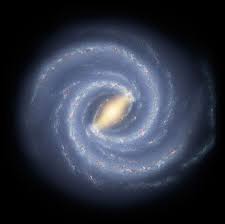This article appears in the Witness section of the Spring 2019 issue of the New Humanist. Subscribe today.
The Hindu Kush Himalaya region runs from Afghanistan to Myanmar. The planet’s “third pole”, it is home to the world’s highest mountains, topped by Mount Everest and K2. There is more ice here than anywhere outside the Arctic and Antarctica but it is, of course, far more populous than either of these places. Around 250 million people live in the region, while 1.65 billion rely on the great rivers that flow from its peaks into India, Pakistan, China and other countries. These rivers include the Yangtze, Mekong, Indus and Ganges. Across these areas, farmers rely on glacier melt water in the dry season to irrigate crops. Despite its importance, the Hindu Kush Himalaya range has received less attention than the Arctic, Antarctica or other places that are highly vulnerable to global warming, such as low-lying islands.
Now, a landmark report led by the International Centre for Integrated Mountain Development has laid bare the devastating impact that climate change will have on these crucially important mountains and the two billion people who depend on their water supply. The report makes sobering reading. Researchers found that even in a best-case scenario, where carbon emissions are dramatically and rapidly cut and succeed in limiting global warming to 1.5°C, 36 per cent of the glaciers in the Hindu Kush Himalaya range will have disappeared by 2100. If emissions are not cut, the loss will soar to two thirds.
The region stretches 3,500 km across Afghanistan, Bangladesh, Bhutan, China, India, Myanmar, Nepal and Pakistan. Published in February, the research was conducted at the request of these eight countries. It was scientifically rigorous: more than 200 scientists worked on it over five years, with peer review by a further 125 scientists.
Perhaps one of the most striking aspects of their findings is the devastating loss predicted even in the best-case scenario. Limiting the global temperature rise to 1.5°C above pre-industrial levels would require cutting emissions to zero by 2050, which many experts see as extremely optimistic, particularly at a time when major powers such as the US are withdrawing from international climate accords. Even in this ideal situation, where emissions are cut to zero within 31 years, a third of the ice will be lost. If temperatures globally rise by 2°C, half of the glaciers are projected to melt by 2100.
It is difficult to overstate the impact that melting glaciers in the Hindu Kush Himalaya region will have. Fresh water from the region’s glaciers flows into ten major river basins, contributing to the drinking water, irrigation and energy needs of approximately 1.9 billion people, or about a quarter of the world’s population. If they were to melt entirely, global sea levels would rise by 1.5 metres.
Climate change is not an abstract problem for the future, but a tangible reality that we are experiencing now. Glaciers in the Hindu Kush Himalaya region have already been thinning and retreating since the 1970s, the report says, but there has been an acceleration since then. This has already caused floods, landslides and epidemics.
Even if we succeed in a goal that currently looks unattainable – slashing carbon emissions to zero by 2050 – there will still be devastating changes to the world around us. As Will McCallum wrote in the Spring 2018 New Humanist, this does not mean that we should collectively abandon campaigns to reduce our reliance on fossil fuels or to limit polluting industrial activity. He wrote: “The challenge, then, is to do both – to adapt to an already changed world and to take action against it getting worse. Collectively, we have some difficult decisions to make about what we choose to save and what we should accept we are going to lose. We need to reflect on what the changed world we are facing is going to look like.”

